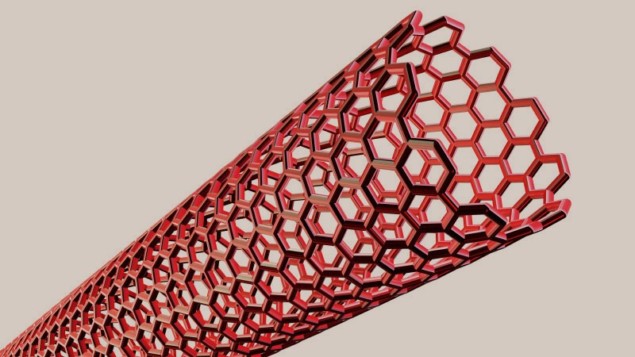
A flexible, ultrathin optical sensor that uses carbon nanotubes to convert light into electrical signals has been unveiled by Rei Kawabata and colleagues. The team at Japan’s Osaka University says that their device could lead to better optical imaging technologies.
Optical sensors play a vital role in modern imaging technologies. So far, conventional sensors have broadly relied on conventional semiconducting elements to convert light into electrical signals. To avoid damage, however, these devices tend to be mounted on thick, sturdy boards, limiting the shapes of the surfaces they are able to image close up.
To overcome the problem, researchers have begun to explore the possibilities presented by sheet-type sensors made from flexible organic materials. In principle, these sensors can wrap around more complex surfaces and image them regardless of their shape. Yet so far, these sensors have not come close to matching the capabilities of their more rigid, inorganic counterparts.
Unstable transistors
“The detection bandwidth of conventional sheet-type optical sensors is narrow,” explains Osaka’s Teppei Araki. “This makes it difficult for them to detect long-wavelength (infrared to terahertz) electromagnetic waves needed for thermal and chemical analysis.” On top of this, the flexible organic transistors required for their operation are known to become unstable when irradiated by light.
To overcome these challenges, the team looked to the unique properties of carbon nanotubes. Not only are they highly flexible; their unique molecular structure also makes them excellent at converting light into electrical energy.
To exploit these advantages, the researchers developed a technique for printing carbon nanotube photodetectors onto thin-film substrates. The nanotubes were doped with chemicals to further improve their sensitivity to light.
Photosensor sheet
“By integrating carbon nanotube photodetectors and organic transistors in an array on an ultra-thin polymer substrate, we have developed a sheet-type photosensor that exhibits stability, flexibility, and high sensitivity at room temperature and in air,” says Araki.
The team found that its sensors are very efficient at detection across a broad spectrum from visible light to terahertz radiation. By integrating a shielding structure – which did not compromise flexibility – they also ensured that the device’s flexible transistors continued to operate reliably when irradiated light. This allowed the device to amplify sensor signals by a factor of 10.
The device is described as a highly flexible light sensor that is suitable for a wide array of imaging applications. “We have developed a thin and soft sheet-type optical sensor that does not damage the object to be measured,” Araki describes.
Bluetooth integration
The team then integrated a Bluetooth module with sensor, which means that the device can be used remotely.

Ultrathin flexible solar cells get an efficiency boost
“We have realized a wireless measurement system that can easily detect and image not only light, but also electromagnetic waves related to heat and molecules,” says Araki.
The researchers used a prototype of their sensor in two successful demonstrations. One involved sensing the heat given off by human fingers; and the other involved involve monitoring a warm sugar solution as it flowed through a thin tube. The team also show that their device is highly durable because it performed well after being crumpled into a ball.
They now aim to improve the device so it can be used in a wide range of applications. “Our wireless measurement system expands the possibilities of non-destructive testing methods,” Araki says. “These could include non-contact imaging, and simple liquid quality evaluations without the need to collect samples. It is also expected to be used in wearable devices and portable imaging devices.”
The research is described in Advanced Materials.
- SEO Powered Content & PR Distribution. Get Amplified Today.
- PlatoData.Network Vertical Generative Ai. Empower Yourself. Access Here.
- PlatoAiStream. Web3 Intelligence. Knowledge Amplified. Access Here.
- PlatoESG. Carbon, CleanTech, Energy, Environment, Solar, Waste Management. Access Here.
- PlatoHealth. Biotech and Clinical Trials Intelligence. Access Here.
- Source: https://physicsworld.com/a/carbon-nanotubes-make-optical-sensor-flexible-and-ultrathin/



